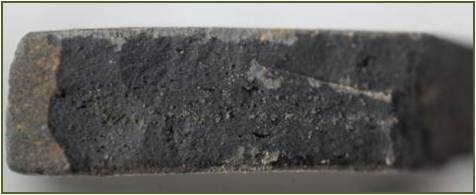Every cloud...and all that jazz!
- Becki Scott
- Jan 9, 2017
- 2 min read
Last night we were invited to the local beach party, and it seemed like the entire community was there. It's official, I cannot twerk! However, a great time was had by all, and we were made to feel so welcome. On the back of this great night came a not so great return to the site. Due to the recent rains and storms, the sea had become really rough and was quite high, right up to the cliff edge in fact. I nearly cried when I saw the cliff site... not only had a large part of the section collapsed, but the trench was entirely filled with water and more washing in. Nothing could be done with that location today, so we were redistributed to help with other aspects of the dig. I spent the morning filming people excavating the main site (but due to copyright and permission issues, I cannot share the footage with you).

After lunch I helped to catalogue ceramics. This involves separating the fragments into groups (rim, body, base etc), counting the number present of each type, and measuring the size. For each rim, we determine the shape and style, the colour, and where possible, estimate the diameter of the complete vessel. We also try to determine the original firing conditions in the furnace, i.e. oxidising (a lot of oxygen present), reducing (no oxygen present), or a combination (e.g. reducing furnace atmosphere, but cooled in air). In order to work out the firing conditions, we look at the colour of the cross-section of the ceramic. In the slideshow, you can see examples of what ceramics fired in different atmospheres look like. An oxidising atmosphere results in a ceramic with an orange core, a reducing atmosphere gives the ceramic a black core. However, if the raw clay either contained or was mixed with organic material, and fired in an oxidising atmosphere, you may get a situation where the core is black/grey and the outside edges are orange. In this instance, not all of the organic material has burned away. But be careful, a ceramic fired in a reducing atmosphere but cooled in air will also have a black/grey core with orange edges. How do you tell the difference? If the edges between the black and orange are sharp then the ceramic was fired in a reduced atmosphere and cooled in air. If the edges between the black and orange are blurry, then the ceramic contained organic matter and the oxidation was incomplete.
I found the work this afternoon really interesting as I have never catalogued ceramics before. Being able to determine the shape of the entire pot/plate/bowl from only a rim fragment is really cool. Once you complete a bag of fragments, you mark it with a star so that the bag doesn't get recorded twice. Although, I have been banned from drawing the stars on the completed bags because I was having too much fun. So, although the day started out with frustration, I learned a lot of new skills and had a lot of fun.







Comments